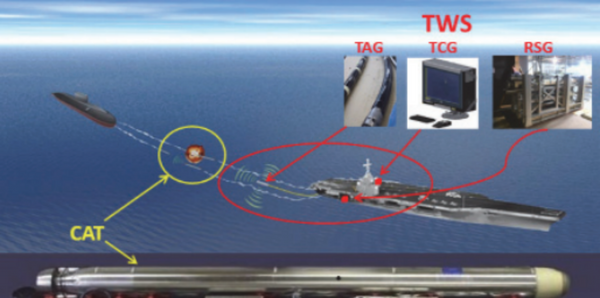The ATTDS systems is composed of two parts: the Torpedo Warning System (TWS) and Countermeasure Anti-Torpedo system (CAT).
The TWS includes a towed sensor that trails the ship in order to detect any incoming threats. In the event that it detects a projectile, it will classify it and provide targeting information for CAT, which will in turn use its "hard-kill" interceptor to neutralize the threat.

Per DOT&E, the problem with the system is that after spending more than $760 million on the project, improvements are few and far between, and the system's ability to destroy incoming threats isn't accurate enough to be fully tested.
"Test data were insufficient to assess operational effectiveness and operational suitability of TWS and CAT," the report states. "TWS demonstrated some capability to detect incoming torpedoes. The significance and effect of false target alerts on TWS capability are unknown."
"CAT demonstrated some capability to defeat an incoming torpedo. CAT has uncertain reliability," the DOT&E report explains, adding that "the lethality of CAT is untested."
With the systems failing to reach the required operational standard, officials noted in the report that between fiscal years 2019 and 2023, both TWS and CAT systems would be removed from all carriers.
According to The Drive, carriers fitted with the system include the USS George HW Bush, USS Harry S. Truman, USS Nimitz, USS Dwight D. Eisenhower and USS Theodore Roosevelt. Both USS Eisenhower and USS Roosevelt were initially fitted with roll-on/roll-off versions of the systems before they were granted upgrades.
Citing past DOT&E reports, the publication noted that TWS experienced a heightened rate of false alarms when a large number of ships were nearby, essentially allowing friendly ships to be used as cover by a hostile submarine within range of the vessel.
Developed in part by the Pennsylvania State University Applied Research Laboratory, the ATTDS was initially slated to be fully operational by 2022, according to Business Insider.


